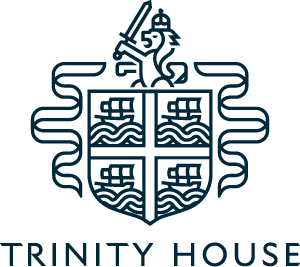
The Corporation of Trinity House of Deptford Strond, also known as Trinity House, is the official authority for lighthouses in England, Wales, the Channel Islands and Gibraltar. Trinity House is also responsible for the provision and maintenance of other navigational aids, such as lightvessels, buoys, and maritime radio/satellite communication systems. It is also an official deep sea pilotage authority, providing expert navigators for ships trading in Northern European waters.
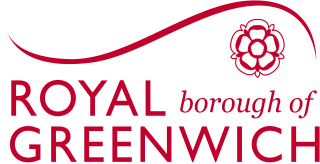
The Royal Borough of Greenwich is a London borough in southeast Greater London. The London Borough of Greenwich was formed in 1965 by the London Government Act 1963. The new borough covered the former area of the Metropolitan Borough of Greenwich and part of the Metropolitan Borough of Woolwich to the east. The local council is Greenwich London Borough Council which meets in Woolwich Town Hall. The council's offices are also based in Woolwich, the main urban centre in the borough.

A lightvessel, or lightship, is a ship that acts as a lighthouse. They are used in waters that are too deep or otherwise unsuitable for lighthouse construction. Although some records exist of fire beacons being placed on ships in Roman times, the first modern lightvessel was off the Nore sandbank at the mouth of the River Thames in England, placed there by its inventor Robert Hamblin in 1734. The type has become largely obsolete; lighthouses replaced some stations as the construction techniques for lighthouses advanced, while large, automated buoys replaced others.
The history of lightvessels in the United Kingdom goes back over 250 years. This page also gives a list of lightvessel stations within the United Kingdom, the Channel Islands and Gibraltar.

Portland Bill is a narrow promontory at the southern end of the Isle of Portland, and the southernmost point of Dorset, England. One of Portland's most popular destinations is Portland Bill Lighthouse. Portland's coast has been notorious for the number of shipwrecked vessels over the centuries. The dangerous coastline features shallow reefs and the Shambles sandbank, made more hazardous due to the strong Portland tidal race.

The Spurn Lightship is a lightvessel, previously anchored in Hull Marina in the British city of Kingston upon Hull, England. It was relocated to a shipyard in October 2021 for restoration, prior to becoming a display together with the Arctic Corsair.
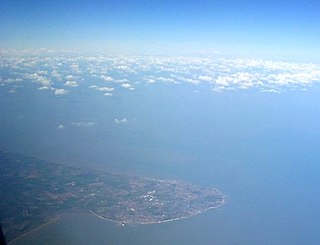
North Foreland is a chalk headland on the Kent coast of southeast England, specifically in Broadstairs.
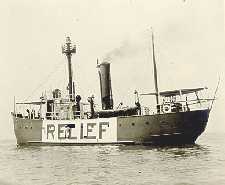
The United States lightship Huron (LV-103) is a lightvessel that was launched in 1920. She is now a museum ship moored in Pine Grove Park, Port Huron, St. Clair County, Michigan.

Sevenstones Lightship is a lightship moored off the Seven Stones Reef which is nearly 15 miles (24 km) to the west-north-west (WNW) of Land's End, Cornwall, and 7 miles (11 km) east-north-east (ENE) of the Isles of Scilly. The reef has been a navigational hazard to shipping for centuries with seventy-one named wrecks and an estimated two hundred shipwrecks overall, the most infamous being the oil tanker Torrey Canyon on 18 March 1967. The rocks are only exposed at half tide. Since it was not feasible to build a lighthouse, a lightvessel was provided by Trinity House. The first was moored near the reef on 20 August 1841 and exhibited its first light on 1 September 1841. She is permanently anchored in 40 fathoms (73 m) and is 2.5 miles (4.0 km) north-east (NE) of the reef. Since 1987, the Sevenstones Lightship has been automated and unmanned.

Sandettie Light Vessel Automatic is a lightvessel stationed in the North Sea. It is one of the 22 coastal weather stations whose conditions are reported in the BBC Shipping Forecast. The vessel is named after her location on the Sandettie Bank, due north of Calais and due east of the South Foreland. The ship has no engine and is not crewed. Its lights are powered by solar panels.

Channel Light Vessel Automatic is the name of a lightvessel in the English Channel. It is one of the 22 coastal weather stations whose conditions are automatically reported in the BBC Shipping Forecast. The vessel's position is 49°55′N2°54′W, approximately 56 km (35 mi) north-northwest of Guernsey.
The Seven Stones reef is a rocky reef nearly 15 miles (24 km) west-northwest (WNW) of Land's End, Cornwall and 7 miles (11 km) east-northeast (ENE) of the Isles of Scilly. The reef consists of two groups of rocks and is nearly 2 miles (3.2 km) long and 1 mile (1.6 km) in breadth. They rise out of deep water and are a navigational hazard for shipping with 71 named wrecks and an estimated 200 shipwrecks overall. The most infamous is the Torrey Canyon in 1967, which was at that time the world's costliest shipping disaster, and to date, still the worst oil spill on the coast of the United Kingdom.

Lightship 2000 was a restored old red lightvessel with a cafe and chapel on board situated in Cardiff Bay. During the redevelopment of Cardiff Bay, the Cardiff Bay Development Corporation called together the churches in Cardiff to discuss the role of Christianity in the Bay. Lightship 2000 was the result of these discussions.

Lightvessel No.11 was a lightvessel that was in service in the Irish Sea from 1951 to 1988. She was built in 1951 for Trinity House by Philip & Son Ltd in Dartmouth, England.
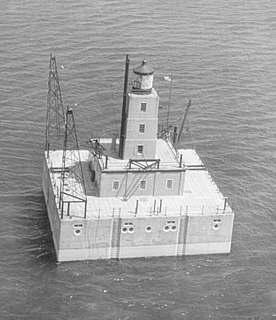
The Lansing Shoals Light Station is a lighthouse located in northeastern Lake Michigan, 6.3 miles (10.1 km) southeast of Point Patterson, in Newton Township, Mackinac County, Michigan. It was listed on the National Register of Historic Places in 2005.

Philip and Son was a shipbuilder in Kingswear, near Dartmouth, Devon, England. Operating from 1858 until the late 1990s, the company provided employment opportunities for nearly 141 years for many people of Dartmouth. It was Dartmouth's last industrial shipyard. A documentary film, Philip and Son, A Living Memory, presents the story of the industrial shipyard from its beginning to its eventual closure.

A Brixham trawler is a type of wooden, deep-sea fishing trawler first built in Brixham in Devon, England, in the 19th century and known for its high speed. The design was copied by boat builders around Britain, and some were sold to fishermen in other countries on the North Sea.
The Kentish Knock is a long shoal in the North Sea east of Essex, England. It is the most easterly of those of the Thames Estuary and its core, which is shallower than 18 feet (5.5 m), extends 6 miles (9.7 km). Thus it is a major hazard to deep-draught navigation. It is exactly 28 miles (45 km) due east of Foulness Point, Essex and is centred about 15 miles (24 km) NNE of North Foreland, Kent – both are extreme points of those counties.

The Bahama Bank Lightship was a Lightvessel stationed on the Bahama Bank east of Ramsey Bay, Isle of Man.
















